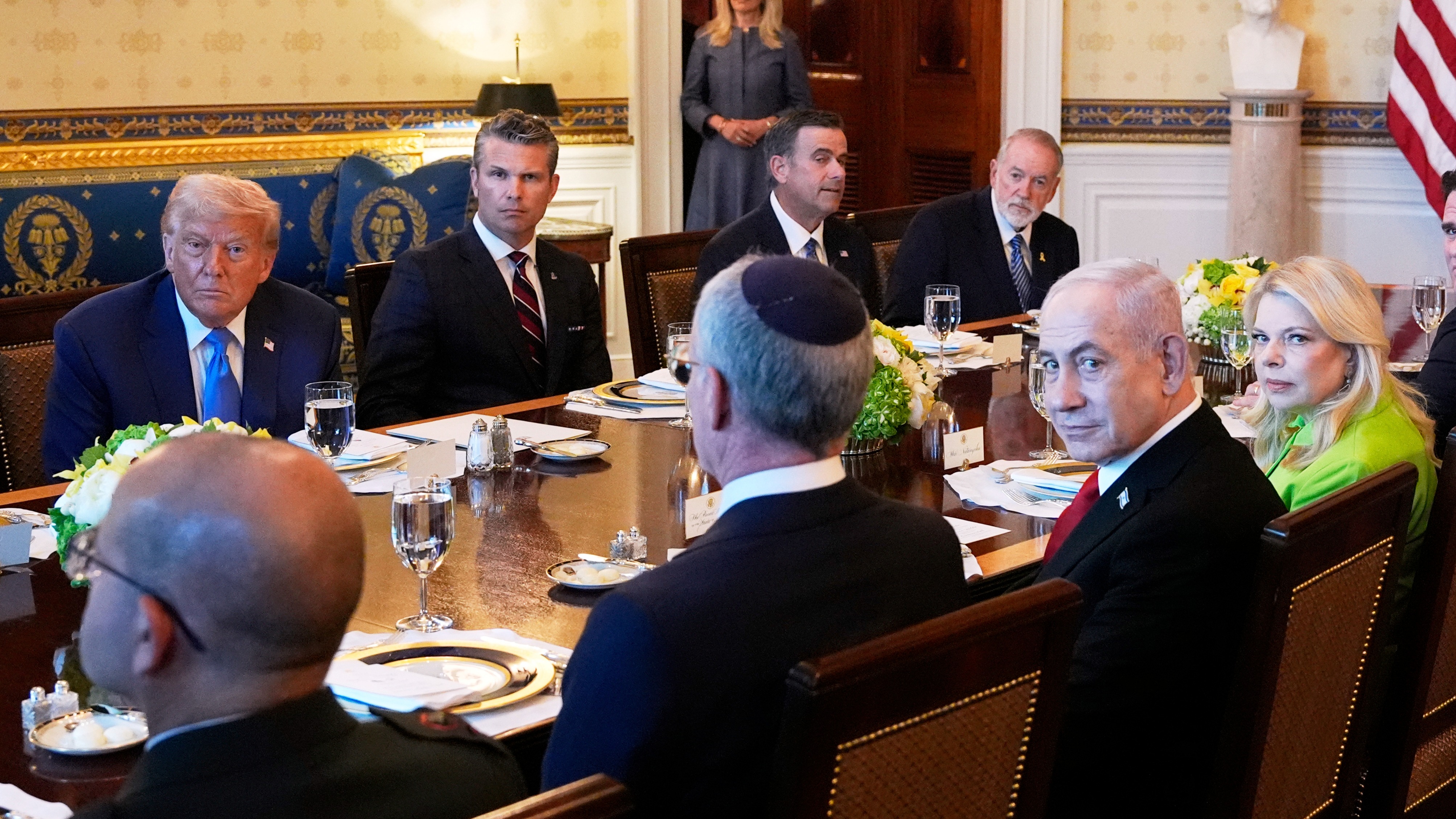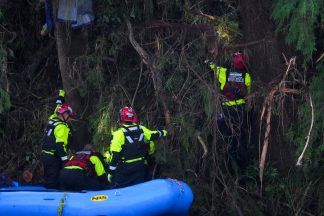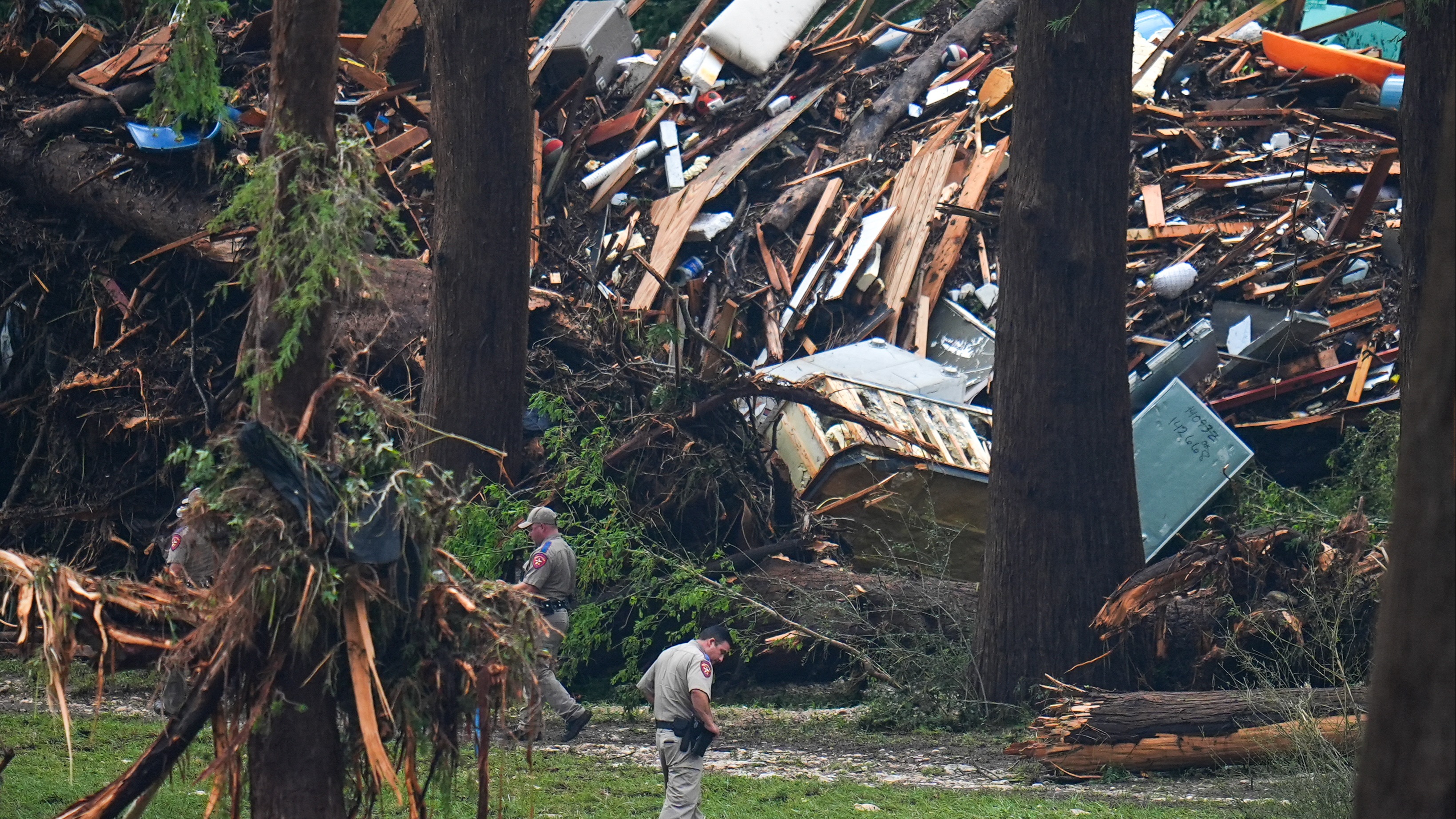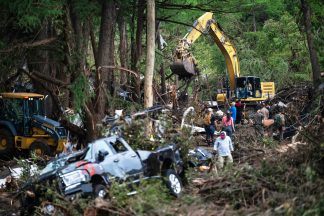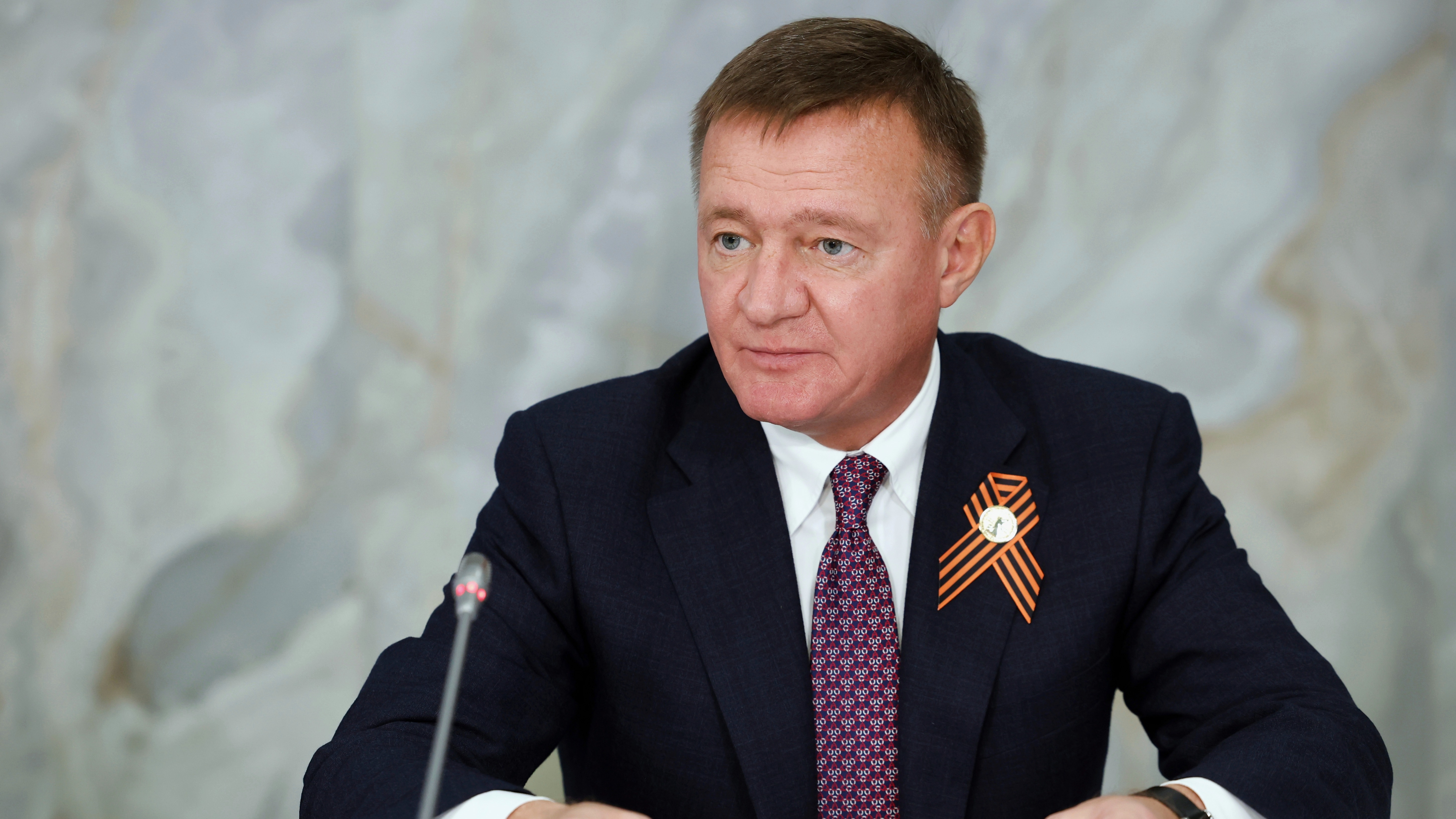Residents of the Gaza Strip were scrambling to find safety on Wednesday, as Israeli warplanes targeted neighbourhood after neighbourhood in the tiny coastal enclave, retaliating for the deadly weekend attack by Hamas militants.
As Gazans crowded into UN schools and a shrinking number of safe neighbourhoods, humanitarian groups pleaded for the creation of corridors to get aid into Gaza, warning that hospitals overwhelmed with wounded people were running out of supplies.
Israel has stopped entry of food, fuel and medicine into Gaza, and the sole remaining access from Egypt shut down on Tuesday after airstrikes hit near the border crossing.
The war, which has claimed at least 2,100 lives on both sides, is expected to escalate.
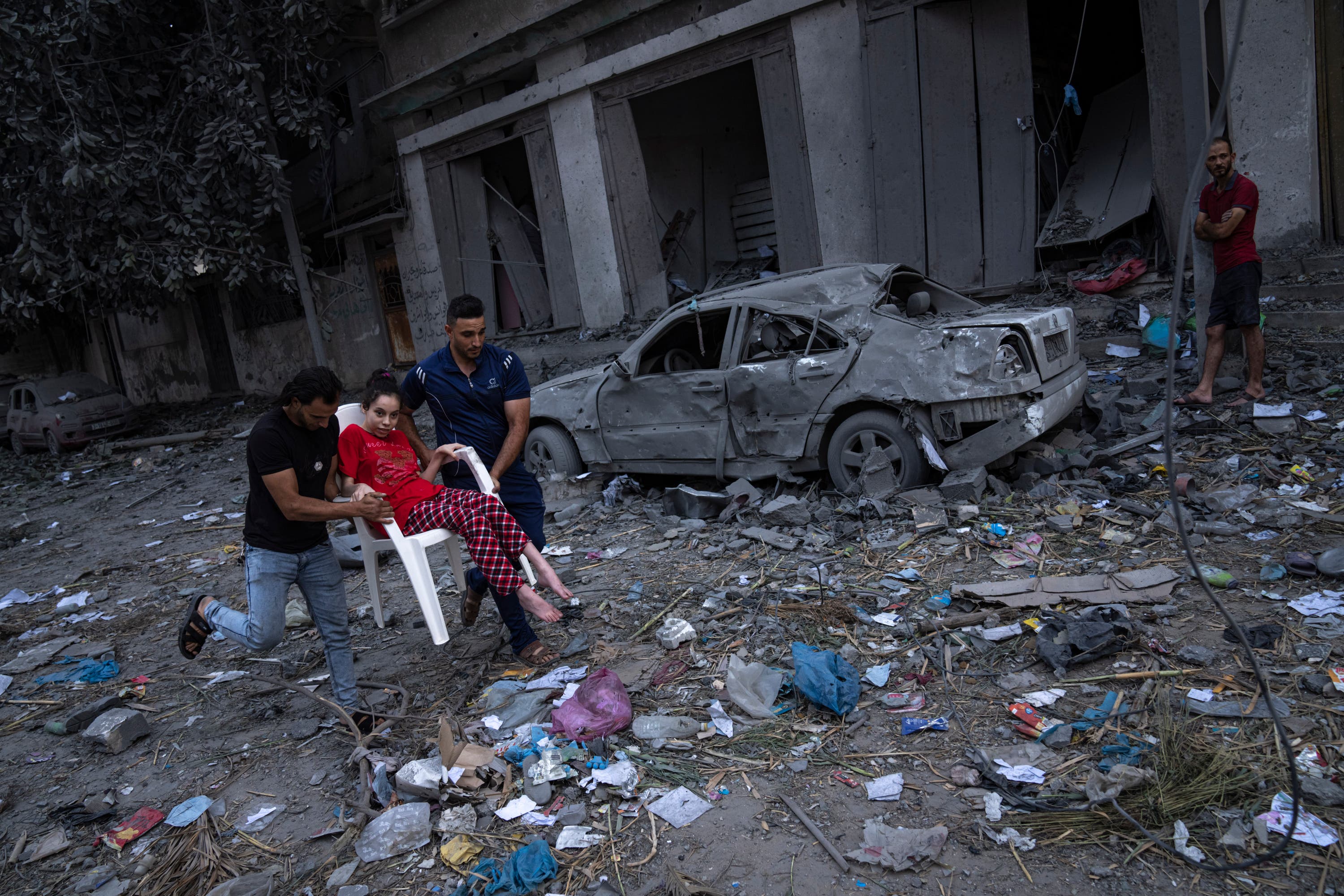 PA Media
PA MediaIsrael appears determined to crush Hamas’ hold on Gaza, following an unprecedented attack in which militants shot civilians in their homes, on streets and at a mass outdoor music festival, while taking men, women and children into captivity.
Hamas and other militant groups in Gaza were holding about 150 soldiers and civilians hostage, according to Israel.
A looming question is whether Israel will launch a ground assault into Gaza — a 25-mile-long (40km) strip of land wedged among Israel, Egypt and the Mediterranean Sea that is home to 2.3 million people and has been governed by Hamas since 2007.
Israel stepped up its offensive on Tuesday, expanding the mobilisation of reservists to 360,000. Israel’s military said it had regained effective control over areas Hamas attacked in its south and of the Gaza border.
New exchanges of fire over Israel’s northern borders with militants in Lebanon and Syria on Tuesday pointed to the risk of an expanded regional conflict.
In a new tactic, Israel is warning civilians to evacuate neighbourhood after neighbourhood, and then inflicting devastation, in what could be a prelude to a ground offensive. On Tuesday, the military told residents of the nearby al-Daraj neighbourhood to evacuate. New explosions soon rocked it and other areas, continuing into the night.
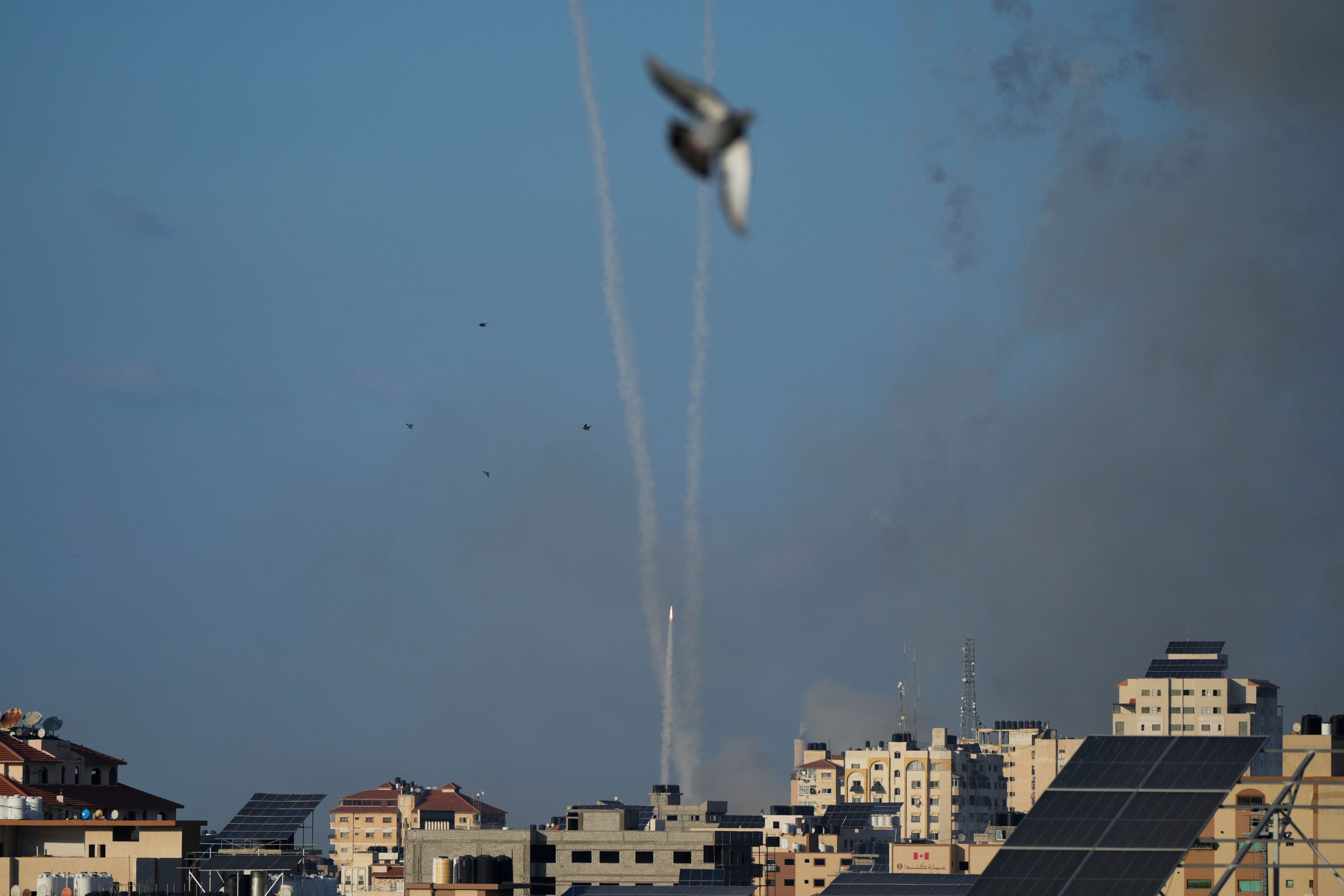 PA Media
PA MediaFighter jets returned multiple times to another neighbourhood, al-Furqan, striking 450 targets in 24 hours, the Israeli military said.
One blast hit Gaza City’s seaport, setting fishing boats on fire.
“There is no safe place in Gaza right now. You see decent people being killed every day,” Gaza journalist Hasan Jabar said after three Palestinian journalists were killed in the Rimal bombardment. “I am genuinely afraid for my life.”
Rescue officials in Gaza said “large numbers” of people were still trapped under the remnants of flattened buildings, with rescue equipment and ambulances unable to reach the area.
On Tuesday afternoon, Hamas fired barrages of rockets toward the southern Israeli city of Ashkelon and Tel Aviv. There were no immediate reports of casualties. On Tuesday night, a group of militants entered an industrial zone in Ashkelon, sparking a gun fight with Israeli troops, the military said. Three militants were killed, and troops were searching the area for others.
Israel’s new tactics could point to a new objective.
Four previous rounds of Israel-Hamas fighting between 2008 and 2021 all ended inconclusively, with Hamas battered but still in control.
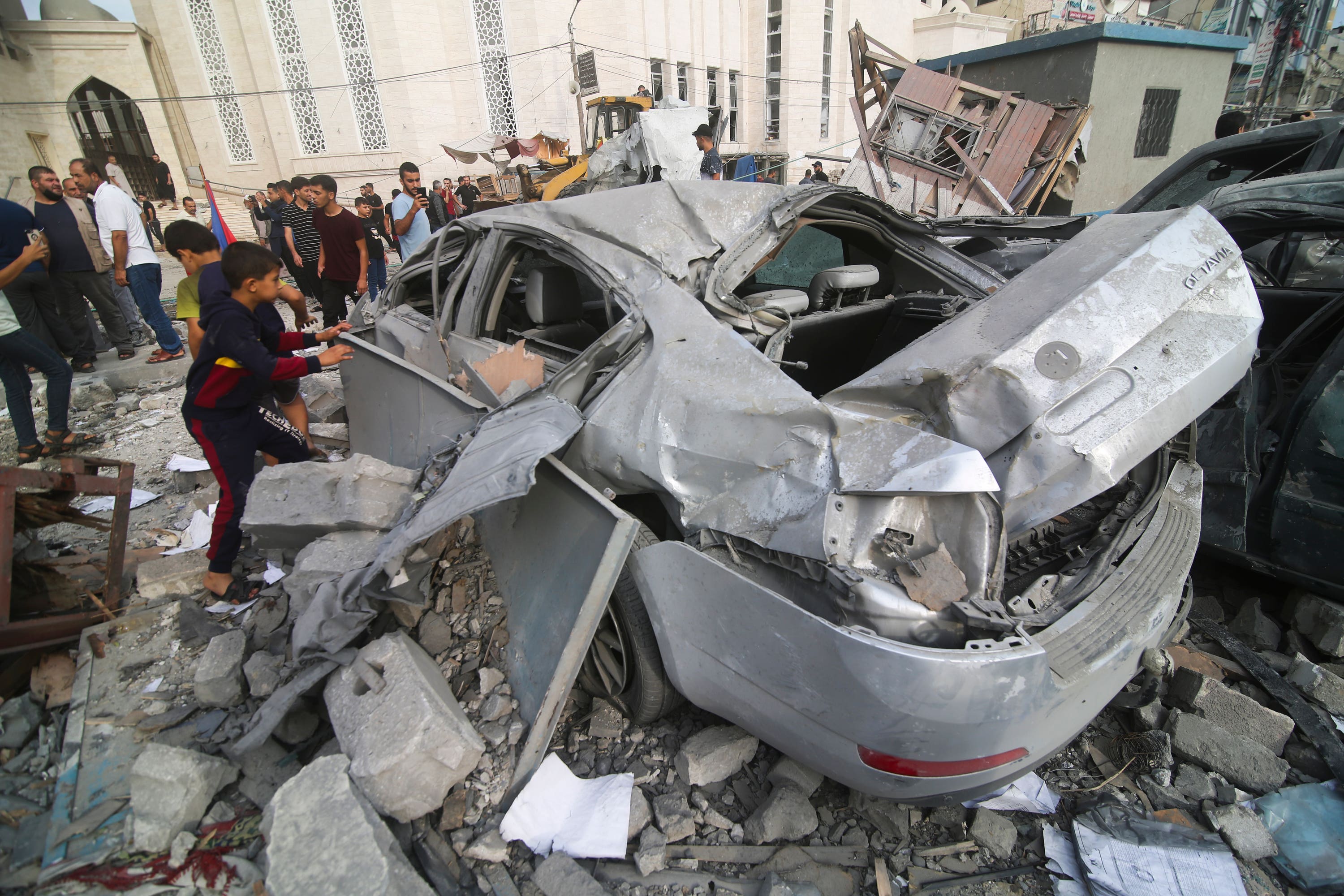 PA Media
PA MediaThis time, Israel’s government is under intense pressure from the public to topple Hamas, a goal considered unachievable in the past because it would require a reoccupation of the Gaza Strip, at least temporarily.
“The objective is for this war to end very differently from all of the previous rounds. There has to be a clear victory,” said Chuck Freilich, a former deputy national security adviser in Israel.
“Whatever has to be done to fundamentally change the situation will have to be done,” he said.
The devastation also sharpened questions about Hamas’ strategy and objectives. Hamas officials have said they planned for all possibilities, including a punishing Israeli escalation. Desperation has grown among Palestinians, many of whom see nothing to lose under unending Israeli control and increasing settlements in the West Bank, a 16-year-long blockade in Gaza and what they see as the world’s apathy.
Hamas may have been counting on the fight to spread to the West Bank and possibly for Lebanon’s Hezbollah to open a front in the north.
Days of clashes between rock-throwing Palestinians and Israeli forces in the West Bank have left 15 Palestinians dead, but Israel has
clamped down heavily on the territory, preventing movement between communities. The violence also spread into east Jerusalem, where Israeli police said they killed two Palestinians who hurled stones at police late Tuesday.
 PA Media
PA MediaBrief exchanges of fire across Israel’s northern border have taken place nearly daily. Palestinian militants fired rockets into northern Israel from Lebanon and from Syria on Tuesday, each bringing Israeli artillery and mortar fire in return. But so far they have not escalated.
The Israeli military said more than 1,200 people, including 155 soldiers, have been killed in Israel. In Gaza, 950 people have been killed, including 260 children and 230 women, according to authorities there; Israel says hundreds of Hamas fighters are among them. Thousands have been wounded on both sides.
The bodies of roughly 1,500 Hamas militants were found on Israeli territory, the military said. It was not clear whether those numbers overlapped with deaths reported by Palestinian authorities.
In Gaza, more than 250,000 people have fled their homes, the UN said, the most since a 2014 air and ground offensive by Israel uprooted about 400,000. The vast majority were sheltering in schools run by the UN agency for Palestinian refugees. Damage to three water and sanitation sites had cut off services to 400,000 people, the UN said.
Tens of thousands of people in southern Israel have been evacuated since Sunday.
Follow STV News on WhatsApp
Scan the QR code on your mobile device for all the latest news from around the country


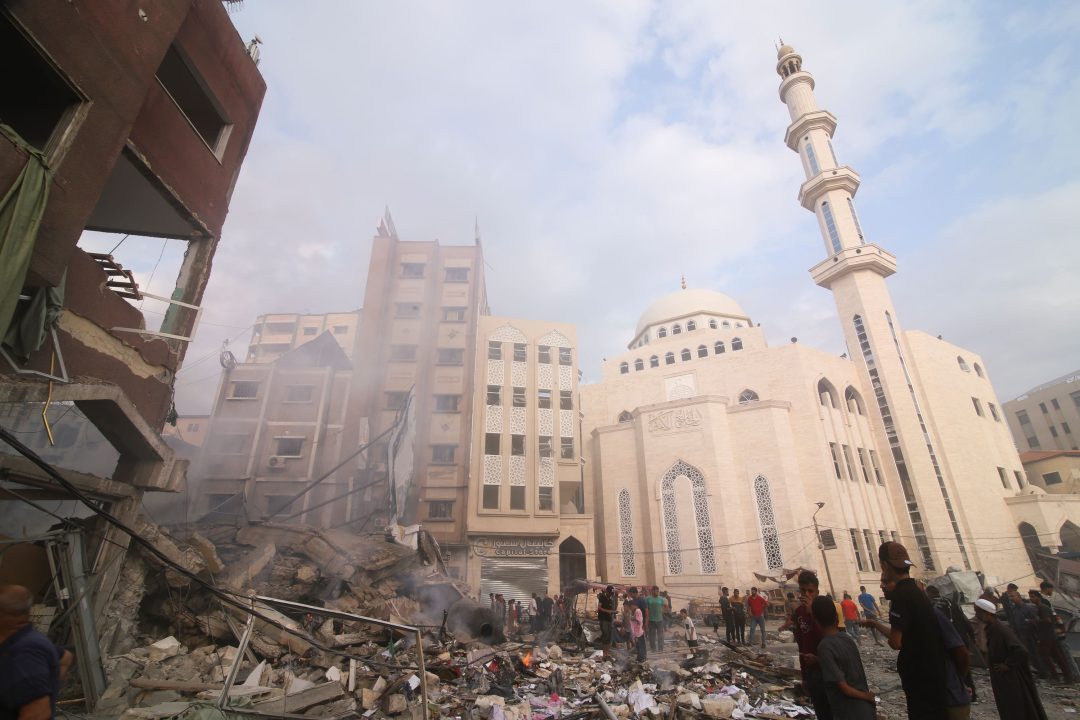 PA Media
PA Media













